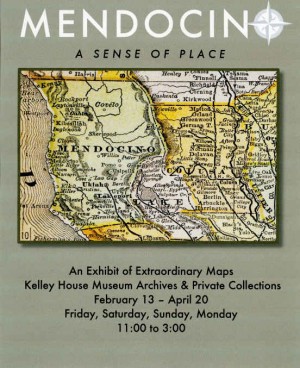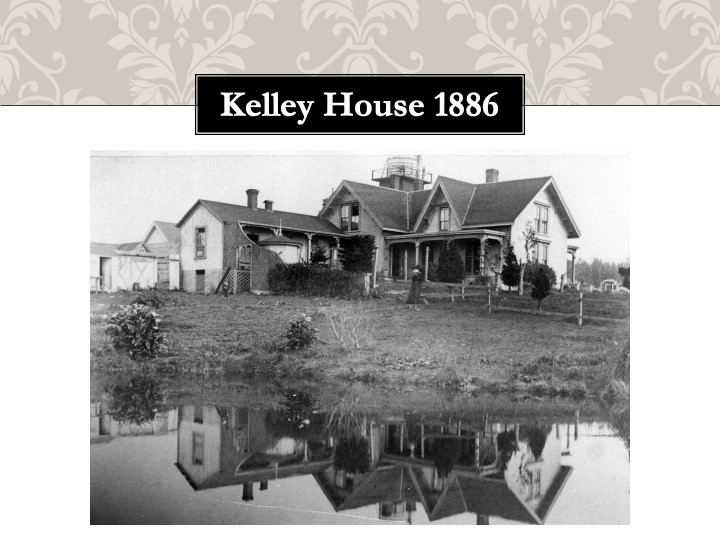 Maps are one of the oldest forms of nonverbal communication. Before humans were writing, they drew maps. Early maps may have only been a diagram in the dirt to show where to find food. As far as historians and geographers can determine, every culture in every part of the world uses and makes maps. The Kelley House has been collecting maps since 1973. In all shapes and sizes, these maps tell a story or solve a problem. There are maps that document minerals, roads, ocean depth, regional dialects, railroads, and tourist destinations. A new exhibition at the Kelley House, “Mendocino: A Sense of Place” features a collection of historic maps from the Kelley House Archives and private collections to tell the story of Mendocino from its beginnings to the present.
Maps are one of the oldest forms of nonverbal communication. Before humans were writing, they drew maps. Early maps may have only been a diagram in the dirt to show where to find food. As far as historians and geographers can determine, every culture in every part of the world uses and makes maps. The Kelley House has been collecting maps since 1973. In all shapes and sizes, these maps tell a story or solve a problem. There are maps that document minerals, roads, ocean depth, regional dialects, railroads, and tourist destinations. A new exhibition at the Kelley House, “Mendocino: A Sense of Place” features a collection of historic maps from the Kelley House Archives and private collections to tell the story of Mendocino from its beginnings to the present.
It is almost impossible to arrive at a single determination of what constitutes a “map”. They are undoubtedly rich historical sources that offer the viewer a new visual dimension. They are more than how to get from A to B, they are windows into time that tell unique stories. They come printed, painted, and as hand-drawn sketches. There is the map that William Richardson drew of his petition for land in Albion as recompense for his many unpaid years as captain of the Port of San Francisco. A 1911 printed map, touting cheap transportation, no snow and good schools, depicting the lovely Mendocino coast as a paradise for the adventurous. Sanborn Insurance Maps of the town of Mendocino, from 1898 and 1909, showing unique details of sidewalks, hydrants, buildings and outhouses.
A map represents three-dimensional reality but is usually drawn on a flat two-dimensional surface. In 1839, the United States Government produced the first Coast and Geodectic Survey, charting the seafloor, measuring water depth, rocks and wrecks that could be hazards to navigation. A 1854 map of the western coast from San Francisco to the Umpquah River documents coastline features and water depths to help ship captains navigate the treacherous waters of the Mendocino bays called “Dogholes”.
The exhibition runs from February 13 through April 20. The Museum is open Friday through Monday, 11:00 – 3:00. The Kelley House is located on Albion Street in Mendocino at 39?18? 28?N, 123?47’58”.
